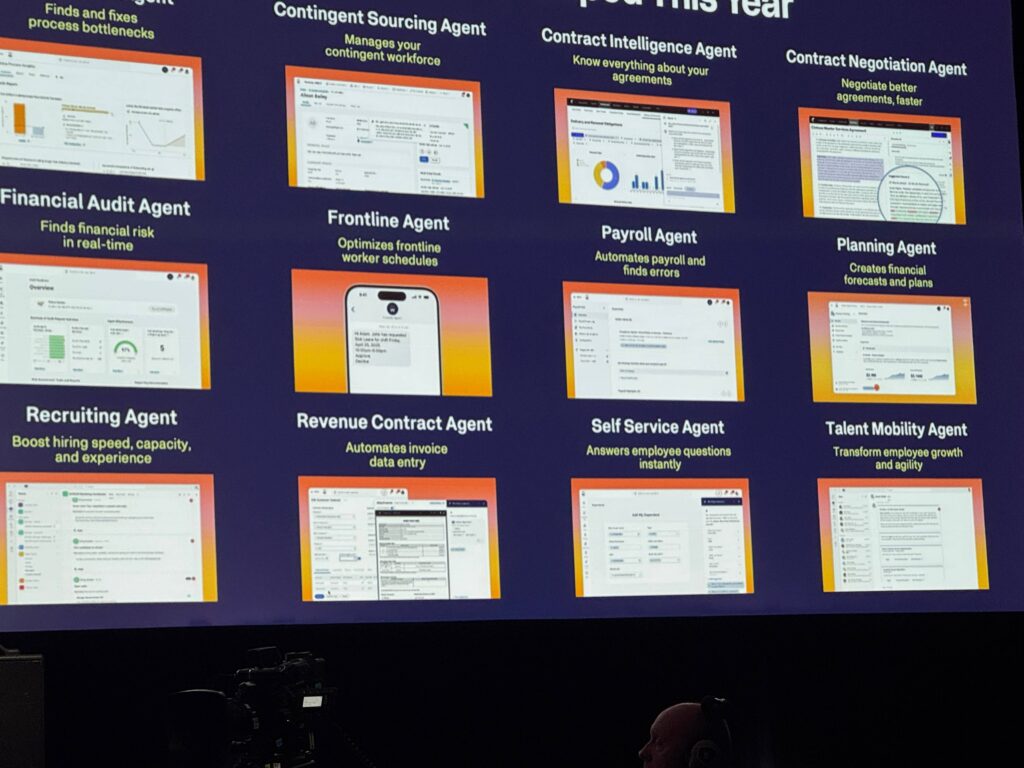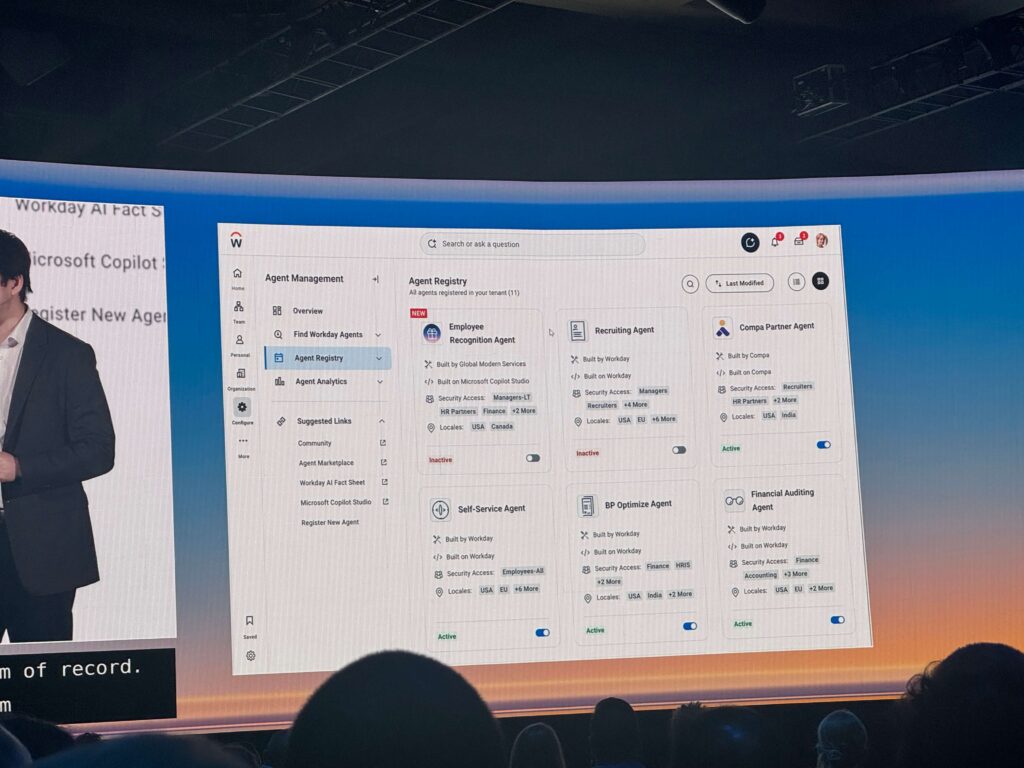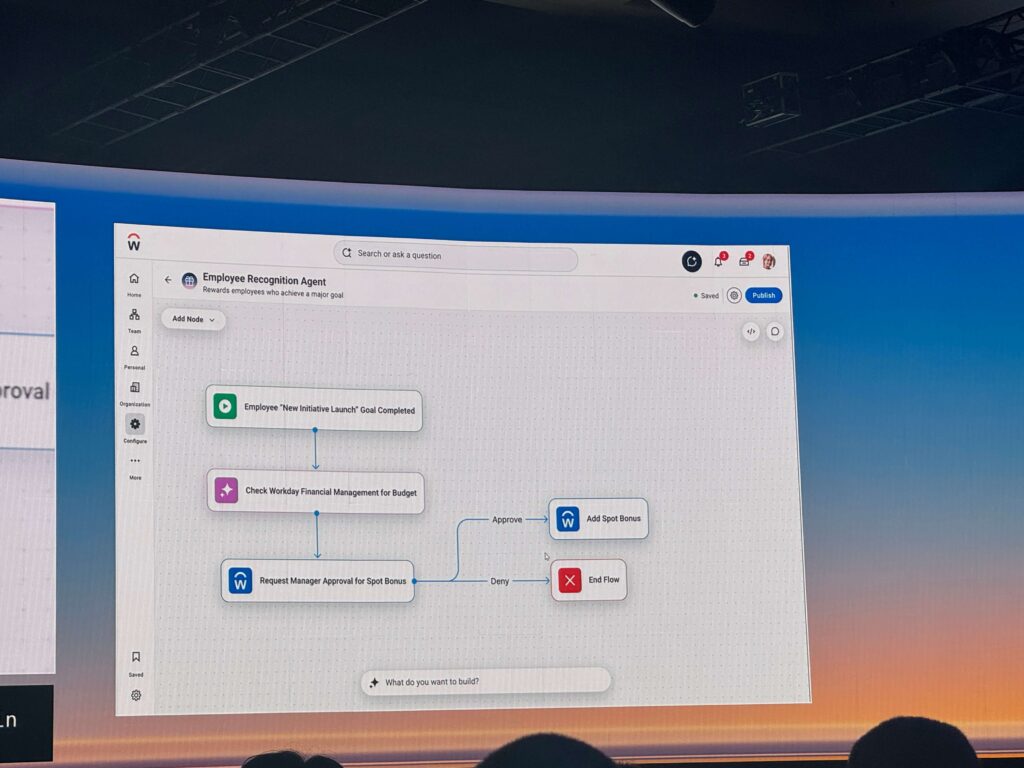This was our second year attending Workday Rising, and the energy didn’t disappoint. From keynotes packed with AI talk to hands-on sessions with builders and partners, it was clear Workday is leaning hard into its next chapter. In this post, we’ve pulled together the announcements that stood out most to us and shared how prospects and the Workday team responded to OnSurvey.
No surpise that AI showed up in every keynote and hallway convo. It’s too early to call how each agent will land, but it’s clear Workday isn’t dabbling. They’re investing heavily in agent frameworks, governance, and entry points across HR and Finance.

Sana — instant access to org knowledge + automated routine tasks so employees spend more time on higher-value work.
Paradox — AI recruiting (screening, scheduling) so recruiters can focus on relationships.
Our read
Big dollars, overlapping messages. Great direction, butintegration will take time.
A new data layer to securely connect and analyze HR + Finance data. Think governed access, analytics at scale, and cleaner ways to blend Workday with the rest of your stack.
Workday introduced Flex Credits, a pay-for-use model across agents/APIs with transparent dashboards.
Why we like it
Lets teams try new AI features quickly without long sales cycles.
Start small, scale what works.

The new Build platform opens doors for customers and partners to create apps and extend Workday faster (low-code for analysts, guardrails for architects).

We are super excited that Workday Marketplace introduced checkout that allows customers to purchase apps directly from the Marketplace.
Our read
Customers will use Workday Marketplace to search and buy apps that fit their requirements.
Certification + marketplace discovery will lower risk for buyers and speed adoption.

We pitched OnSurvey across prospects and Workday teams. The response was positive; many asked to pilot. Two common questions:
How is OnSurvey different from native surveys?
Event-driven: trigger micro-surveys from Workday events (hire, transfer, case updates).
Workflow-aware: route results into tasks, approvals, and SLAs and not just dashboards.
Support for both anonymous and authenticated surveys.
Where does OnSurvey store responses?
Workday-centric: write summarized/structured responses to custom objects.
Workday is clearly playing the long game. The focus on AI agents, Data Cloud, Workday Build, and the Workday Marketplace shows a deliberate strategy to strengthen the core platform while opening space for partners and customers to innovate. Not every feature is available today as some are scheduled for next year. We’re especially bullish on the Workday Marketplace, which we believe will see strong adoption as customers look for certified solutions before building their own or turning to external tools.
RELATED
